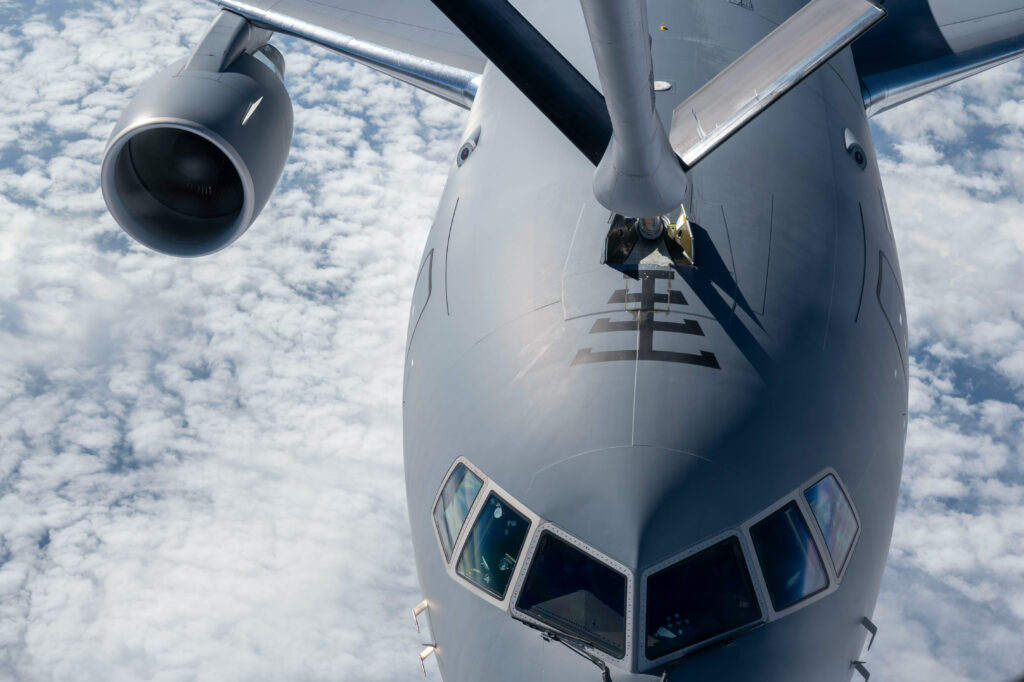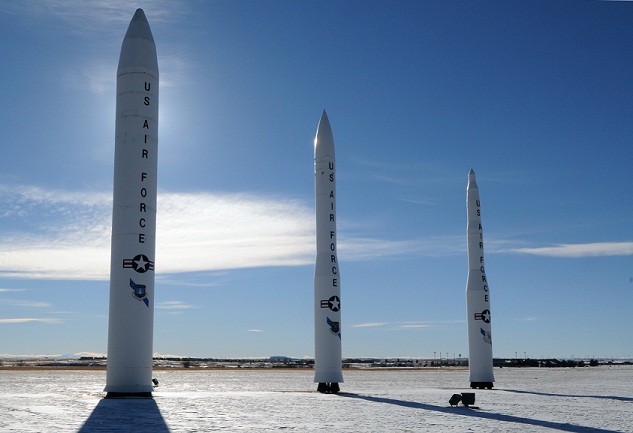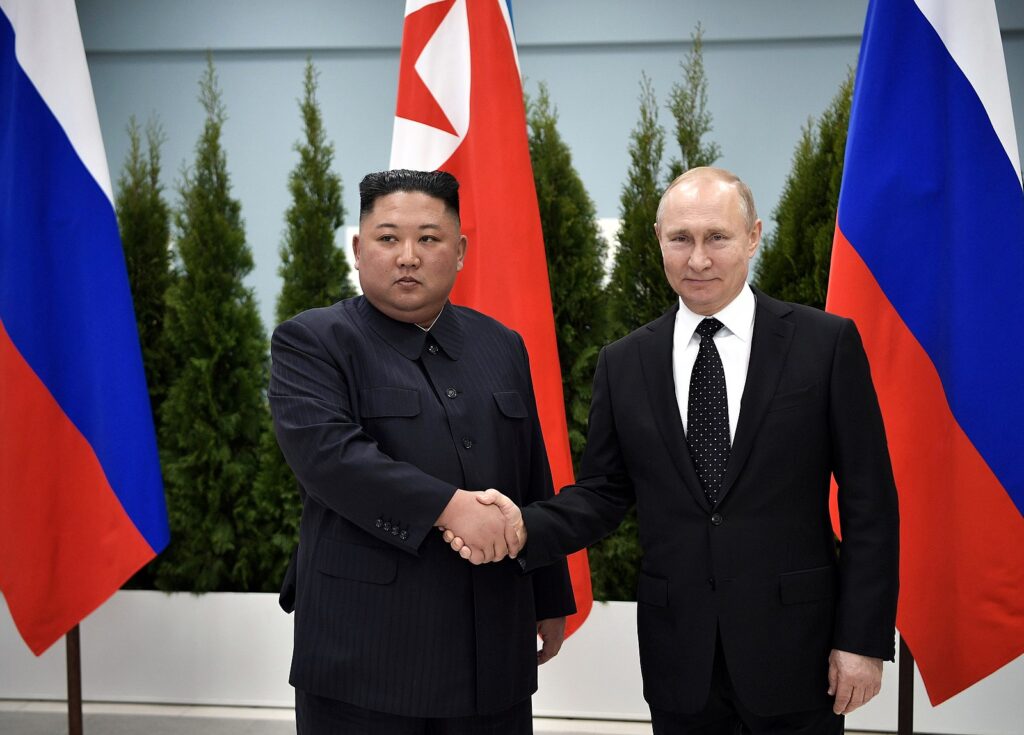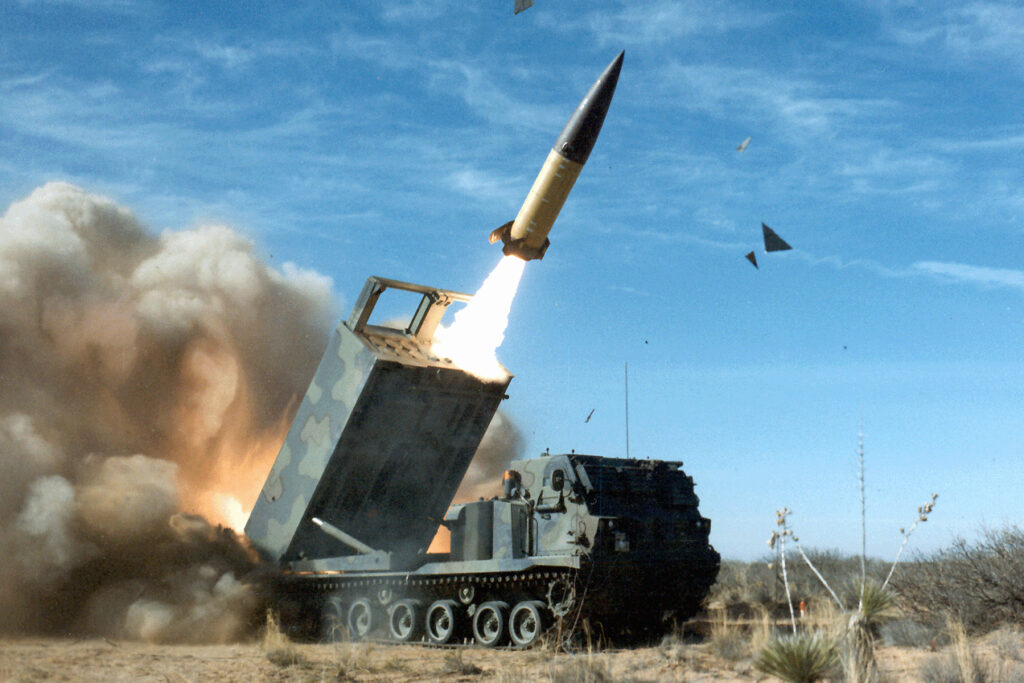Chicken or pasta? Air Force KC-46 tanker achieves 45-hour flight
- By Stavros Atlamazoglou
Share This Article

For the first time ever, on June 29, a KC-46A Pegasus from the 22nd Air Refueling Wing took off from McConnell Air Force Base in Kansas and flew around the world nonstop in a Maximum Endurance Operation before returning to the base on July 1 as part of Project Magellan. During the 45-hour flight, the KC-46A Pegasus refueled several aircraft, including B-2 Spirit strategic bombers, C-17 Globemaster III transports, F-15E Strike Eagle fighter jets, as well as another KC-46A Pegasus.
“Maximum Endurance Operations [MEO] are all about overcoming the tyranny of distance: with a 48-hour duty day, you can literally fly across the world,” Capt. Cody Donahue, the executive officer of the 22nd Operations Group and planner behind Project Magellan, said in a press release.
With the prospect of a near-peer conflict with China or Russia always looming in the background, a reliable and effective air tanker fleet is a national security necessity.
“In an era of Great Power Competition, crews need the ability to operate longer than they have in the past, and Project Magellan is the next step in getting AMC [Air Mobility Command] crews experience in the game-changing new construct that is MEO,” Donahue added.
The crew who fly these aircraft needs rest too. So, in the event of a conflict, Air Mobility Command is planning to have a reinforced crew of four pilots and several boom operators onboard air tankers to achieve 48-hour flights.
“The 22nd ARW’s recent MEO around the world showcased not only the unmatched endurance of the KC-46 aircraft, but also the incredible resilience and professionalism of our aircrew,” Col. Cory Damon, the commanding officer of the 22nd ARW, stated.
“This mission was a true test of our capabilities and a shining example of the critical role our tankers play in providing fuel and support to the joint force. I’m incredibly proud of our team’s achievement in pushing the boundaries of what our tankers and their crews can do, and I have no doubt that this historic mission will serve as a foundation for future maximum endurance operations and further solidify our position as a key enabler of global power projection,” Damon, who was also aboard the final tanker that refueled the KC-46 flight, added.
Related: ‘Counterculture’ approach enabled C-130’s 26-hour marathon flight
Air tankers and near-peer fighting

In a potential conflict with China, the main theater of operations would be the vast Indo-Pacific. As such, naval and air operations will be predominant in the fighting, and air fuel could play a determining part.
Primary U.S. fighter jets have operational endurance that ranges from approximately 1,400 to 1,900 miles without air refueling. (The F-16 Fighting Falcon has a range of around 1,300 miles, the F-35 Lightning II, F/A-18 Super Hornet, and F-15EX Eagle II about 1,400 miles, and the F-22 Raptor has a range of almost 1,900 miles). Yet, those ranges change drastically depending on the mission set and the role of the aircraft. For example, an F-35C Lightning II launched from a U.S. aircraft carrier on a mission to take out a Chinese radar would have to depend on stealth and wouldn’t be able to carry any external fuel tanks, thus reducing its range. Moreover, combat radius is always smaller than operational range because in combat, fighter jets spend vastly more fuel due to aggressive maneuvers.
In addition, Chinese investment in Anti-Access/Aerial Denial (A2/AD) weapon systems threatens to make the area around Taiwan and the South China Sea so dangerous that U.S. aircraft carriers would be forced to stay out of range, thus negating their whole reason d’étre.
This is where air tankers come into play. These behemoths can stay airborne for hours on end – or days as evidenced by the recent KC-46A Pegasus’ performance – and refuel friendly aircraft before, during, or after a mission. To be sure, in order to rearm, fighter jets would still need to land in a “hot” operational environment, but the ability to refuel mid-air, remain airborne, and enter the fight when needed is invaluable.
The KC-46A Pegasus’ recent herculean feat showcases that America’s air tanker fleet is ready for the challenge.
Read more from Sandboxx News
- Once forbidden and feared, tourniquets save the life of 15-year-old shark attack victim
- China was spotted using mock-ups of American stealth fighters to train its pilots
- Video: DARPA’s newest X-Plane has been unveiled
- Upgrade aims to slim down the insanely heavy Abrams tank
- Hotchkiss Type Universal aimed to become a paratrooper’s best friend
Related Posts
Sandboxx News Merch
-

A-10 ‘Thunderbolt Power’ Framed Poster
$45.00 – $111.00 Select options This product has multiple variants. The options may be chosen on the product page -

‘Kinetic Diplomacy’ Coaster (1)
$7.00 Add to cart -

‘Sandboxx News’ Camo Trucker Hat
$29.00 Select options This product has multiple variants. The options may be chosen on the product page
Stavros Atlamazoglou
Greek Army veteran (National service with 575th Marines Battalion and Army HQ). Johns Hopkins University. You will usually find him on the top of a mountain admiring the view and wondering how he got there.
Related to: Military Affairs

The B-2 Spirit is aging but still packs a bunch

How large are the nuclear arsenals of Russia and China compared to those of the US and its allies?

50,000 Russian and North Korean troops prepare to attack Ukrainian forces in Kursk

What damage can Ukraine inflict on Russia using its long-range Western weapons?
Sandboxx News
-

‘Sandboxx News’ Trucker Cap
$27.00 Select options This product has multiple variants. The options may be chosen on the product page -

‘AirPower’ Classic Hoodie
$46.00 – $48.00 Select options This product has multiple variants. The options may be chosen on the product page -

‘AirPower’ Golf Rope Hat
$31.00 Select options This product has multiple variants. The options may be chosen on the product page -

‘Sandboxx News’ Dad Hat
$27.00 Select options This product has multiple variants. The options may be chosen on the product page
